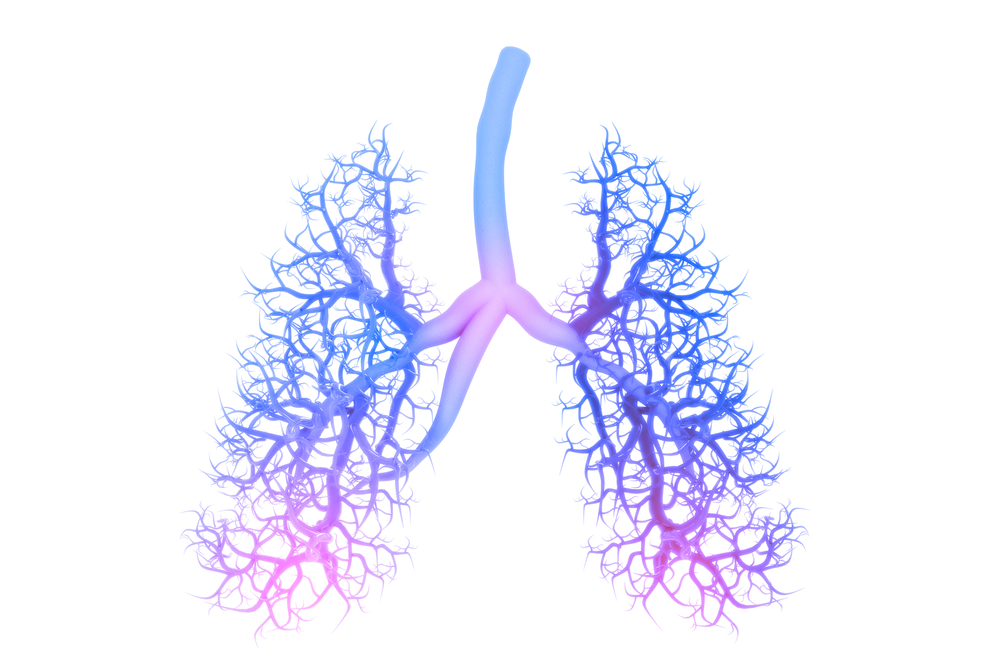Long-term Treatment with Puldysa Reduces Lung Function Decline in DMD Patients, Study Shows

Long-term treatment with Puldysa (idebenone) provides a stable reduction of lung function decline by approximately 50% in people with Duchenne muscular dystrophy (DMD), a study shows.
The research, “Long-term data with idebenone on respiratory function outcomes in patients with Duchenne muscular dystrophy,” was published in Neuromuscular Disorders.
Puldysa is an experimental oral treatment for respiratory symptoms associated with DMD that is being developed by Santhera Pharmaceuticals. It is intended to improve mitochondrial function, restore the production of adenosine triphosphate (ATP) and reduce the generation of harmful reactive oxygen species (ROS).
(Of note, mitochondria are the cell compartments responsible for the production of energy, ATP is a small molecule used as “fuel” by all cells in the body, while ROS are toxic free radicals that cause oxidative stress.)
In a previous Phase 2 clinical trial called DELPHI (NCT00654784), Puldysa reduced lung function decline in people with DMD receiving treatment for one year.
A later Phase 3 trial, DELOS (NCT01027884), which investigated the effects of Puldysa on several lung function parameters in 64 DMD patients who had discontinued treatment with glucocorticoids, confirmed this slower loss of lung function over a similar period.
Seeking to assess lung function benefits over a longer term, researchers at Santhera reported the findings from SYROS, a retrospective study of 18 DMD patients who were not receiving glucocorticoids.
All participants had taken part in DELOS and continued treatment with Puldysa (900 mg/day, given as oral tablets) under Expanded Access Programs (EAPs) under routine clinical care. Average treatment duration was 4.2 years (range 2.4 to 6.1 years).
The main goal was to monitor the evolution of several lung function parameters, including forced vital capacity (FVC) and peak expiratory flow (PEF), while on Puldysa and compare it to periods off the medication.
(Of note, FVC measures the total amount of air a patient is able to exhale after a deep breath, while PEF measures the maximum rate at which a patient can exhale.)
Results revealed that in patients who were off Puldysa before EAPs, which included those receiving a placebo during DELOS, the annual rate of percent predicted FVC decline went from 7.4% while off the medication to 3.8% when taking the therapy. This corresponded to a reduction in lung function decline of approximately 50%.
Likewise, the annual rate of PEF decline went from 5.9% while off the medication to 1.9% when taking Puldysa.
In addition, the annual rate of decline of both FVC and PEF remained stable over the entire follow-up period, and was consistently lower than the decline observed in untreated DMD patients participating in a natural history study.
Also, the frequency of respiratory adverse events (side effects) and hospitalizations due to respiratory infections or other complications was lower while on Puldysa than off the therapy.
“Reducing the annual rate of decline in respiratory function during idebenone [Puldysa] treatment appears to be clinically relevant as it was associated with a smaller number of bronchopulmonary complications and hospitalization for respiratory events,” Laurent Servais, MD, PhD, the study’s lead author, said in a press release.
“Furthermore, a sustained reduction in the rate of decline in [FVC] indicates a potential therapeutic benefit during long-term treatment as it could result in a delay in the need of assisted ventilation,” said Servais, who is a professor at University of Oxford and head of the Neuromuscular Centre in Liège, Belgium.
Gunnar M. Buyse, MD, PhD, principal investigator of SYROS, said these results “provide a highly valuable data set complementing the previously reported body of evidence, especially the positive Phase 3 DELOS trial.”
“The totality of available data demonstrate that idebenone preserves respiratory function and holds disease-modifying therapeutic potential,” added Buyse, a professor at University Hospitals Leuven, also in Belgium.
However, the team said that many questions are still unanswered. These include the effects of Puldysa in skeletal muscles of young people with DMD, who are still able to walk without assistance and have no signs of weakness in respiratory muscles.
A large Phase 3 trial, SIDEROS (NCT02814019), is currently exploring the effects of combining Puldysa with glucocorticoids on respiratory function of 266 patients age 10 and older with DMD. The study is ongoing in the U.S., U.K., and the European Union. It is estimated to be completed in August 2021.
In June, the European Medicines Agency validated Santhera’s marketing authorization application covering Puldysa for treating respiratory dysfunction in DMD patients who do not take glucocorticoids. A decision on whether to approve the therapy is expected in mid-2020.
Idebenone is marketed as Raxone in the European Union for the treatment of visual impairment in people with Leber’s hereditary optic neuropathy.






